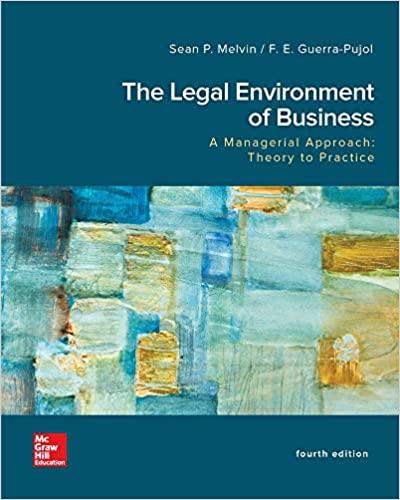Question
Step 1: Inventory of Facts : Provide a brief listing of the key facts in the case. Step 2: Statement of Problem(s ): Concise statement
Step 1: Inventory of Facts: Provide a brief listing of the key facts in the case.
Step 2: Statement of Problem(s): Concise statement of the major problem(s) in case. Problems should be stated as things to be corrected or resolved.
Step 3: Analysis of Causes: Identification and analysis of all possible causes of the problem(s).
Step 4: Theory Application: Identification of all theories or models that might apply to these problems and aid in solutions. Use the theory to introduce the problems and to solve the problems.
Step 5: List of Possible Solutions: Identification of possible solutions to each problem as stated. What objectives are achieved with each solution? This section should present an action plan for what solution should be utilized first and a time frame.
Step 6: Implementation: How would you carry out your solution? Provide a concrete action plan.

Step by Step Solution
There are 3 Steps involved in it
Step: 1

Get Instant Access to Expert-Tailored Solutions
See step-by-step solutions with expert insights and AI powered tools for academic success
Step: 2

Step: 3

Ace Your Homework with AI
Get the answers you need in no time with our AI-driven, step-by-step assistance
Get Started


